INFICON Product Engineer wins RUAG Innovation Award
Dominic Moser, Product Engineer, earns Award for Bachelor's Thesis in Mobile Robotics.
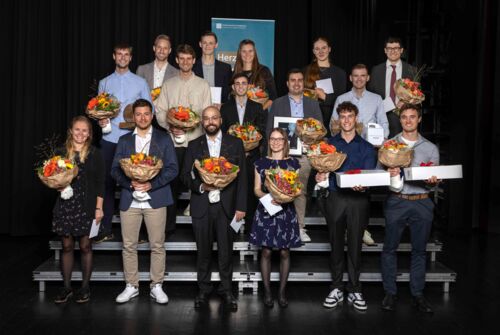
UPDATE: Dominic Moser achieves first place in swiss-national innovation competition
Following his receipt of the prestigious RUAG Innovation Award for his bachelor's thesis at the University of Applied Sciences of the Grisons, Dominic Moser has now secured first place in Switzerland's national innovation competition. This additional recognition highlights the significance of his innovative approaches to addressing critical challenges in engineering and sustainability.
(December 2024)
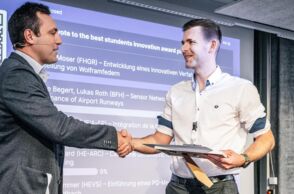
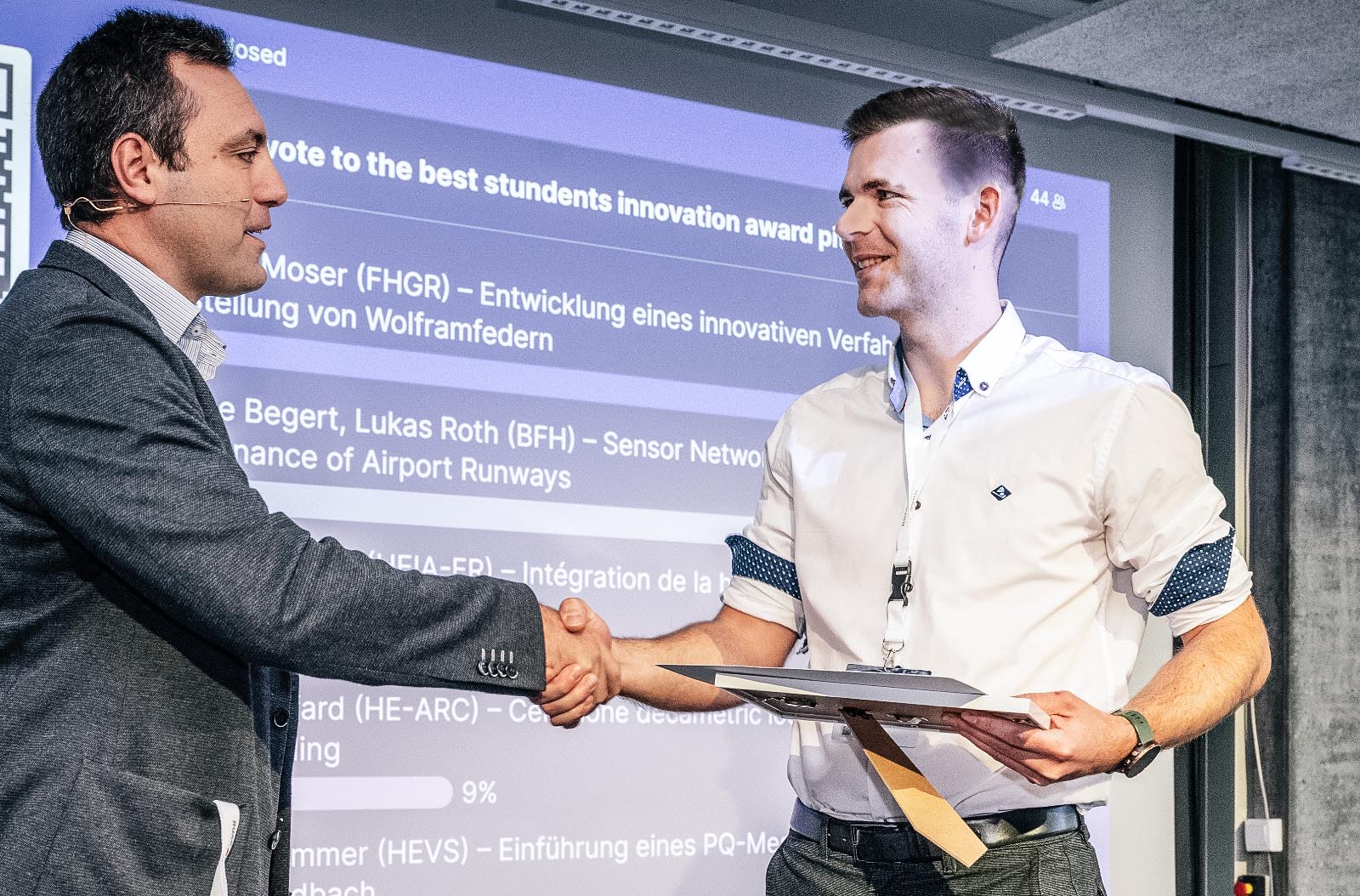
RUAG Innovation Award by University of Applied Sciences of the Grisons
Dominic Moser has been awarded the prestigious RUAG Innovation Award for his Bachelor’s thesis at the University of Applied Sciences of the Grisons, Switzerland. The RUAG Innovation Award honors young talents who have demonstrated outstanding achievement in addressing security-related issues in Switzerland in a scientifically sound and practice-oriented manner. His work focuses on developing an environmentally friendly and automatable process for manufacturing tungsten springs used in vacuum sensors, reducing reliance on external suppliers and eliminating harmful chemicals from the process. This recognition highlights his innovative approach to solving critical challenges in engineering and sustainability.
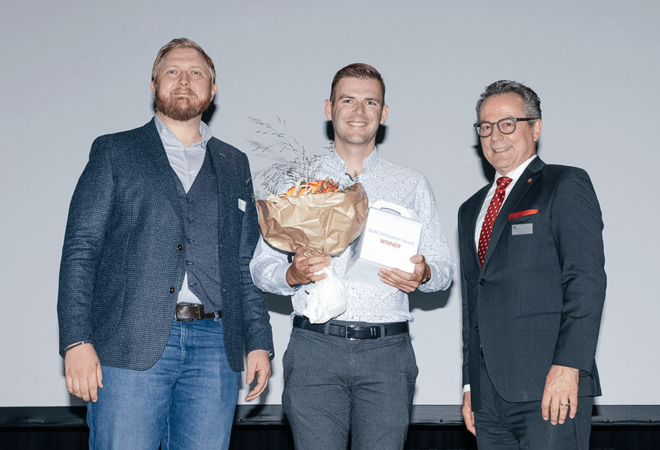
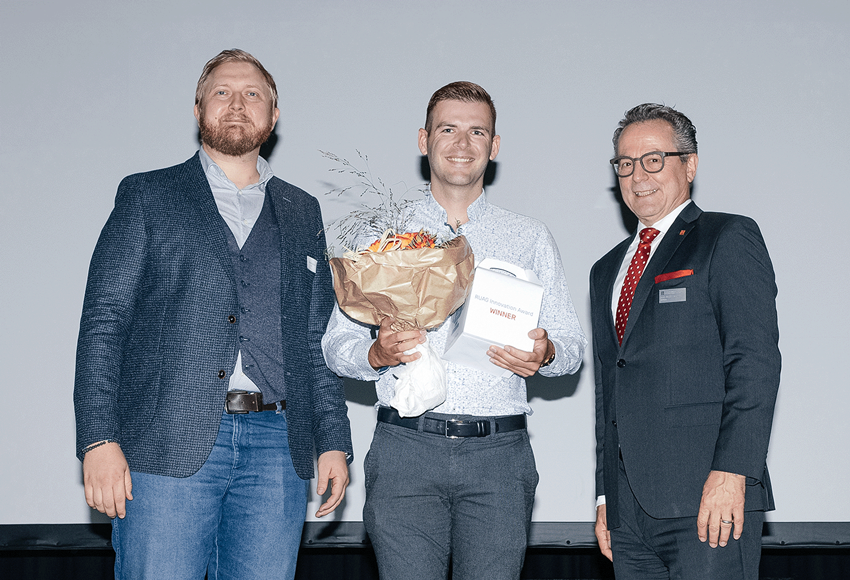
Dominic’s Focus: Sustainable Tungsten Spring Manufacturing
INFICON uses tungsten springs as sensor elements for its vacuum sensors to measure the vacuum pressure. These springs are currently purchased from an external manufacturer. They consist of tungsten that is wound around a molybdenum core and then cut to the desired length. After that, the core is removed by etching with aqua regia. This dependency on an external supplier, as well as the dangerous and environmentally harmful etching process, are to be avoided. In addition, the aqua regia gradually attacks the tungsten, which impairs the quality of the springs. The use of aqua regia and the duration of the etching process also make automation difficult, both technically and economically.
The aim of this work is therefore to produce tungsten springs in an environmentally friendly way and in-house. For this purpose, a tungsten wire with a diameter of 10 µm was used to produce a spring with a diameter of 150 µm and a pitch of 50 µm and a length of 2 cm. To ensure the dimensional stability of the spring, it must be heated. First, a suitable core material was determined that would allow for easy separation of the spring from the core and at the same time be suitable for heating the spring. Various materials were tested in a trial setup, with a polymer-coated glass fibre proving to be the best solution. To stabilise the shape of the spring and prevent oxidation, a special box was constructed that is continuously flushed with argon. The spring is heated by an electric current applied to both ends. For the mechanical processing of the wire, it is essential that it is always under tension. With precise wire guidance and innovative clamping mechanisms, the wire can be processed and wound automatically. The structure showed that it is possible to produce a spring without the use of chemicals. Furthermore, the pitch and length of the spring can be adjusted as required.
Become part of INFICON
Have you been inspired by Dominic's path and spirit and are you thinking about a career at INFICON? - Take the first step and find out more about a career at INFICON and check out the current open positions.
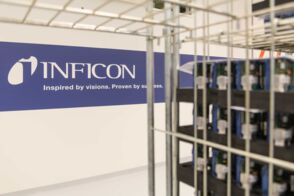
Related Articles
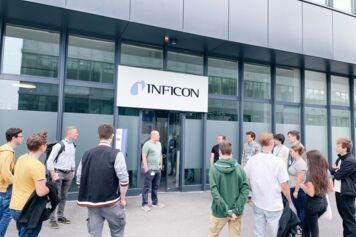
INFICON was part of the annual Photonics Day in Collaboration with University of Applied Sciences Graubünden, Switzerland.
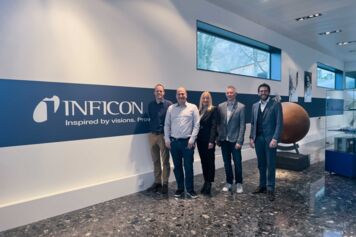
A university degree course with integrated practical phases in a company - this is made possible by a cooperation with the University of Applied Sciences Grisons, Switzerland . This so-called dual study program focuses on practical training and the combination of study and work.